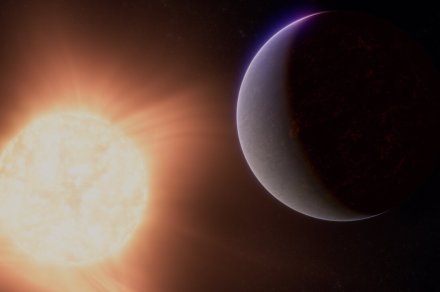
This artist’s concept shows what the exoplanet 55 Cancri e could look like. Also called Janssen, 55 Cancri e is a so-called super-Earth, a rocky planet significantly larger than Earth but smaller than Neptune, which orbits its star at a distance of only 2.25 million kilometers (0.
015 astronomical units), completing one full orbit in less than 18 hours. NASA, ESA, CSA, R. Crawford (STScI) When it comes to learning about exoplanets, or planets beyond our solar system, the James Webb Space Telescope is providing more information than ever before.

Over the last decade or so, thousands of exoplanets have been discovered, with details available about these worlds, such as their orbits and their size or mass. But now we’re starting to learn about what these planets are actually like, including details of their atmospheres. Webb recently investigated the atmosphere around exoplanet 55 Cancri e, finding what could be the first atmosphere of a rocky planet discovered outside the solar system.
The planet in question, 55 Cancri e, isn’t a welcoming place. The star that hosts it is sun-like, but the planet orbit is so close to it, at just 1.4 million miles away, that its surface is likely to be a bubbling ocean of magma.
It’s even known as the “ hell planet .” But despite the extreme conditions there, astronomers have long wondered if the planet could host an atmosphere or if it is too hot and bombarded by too much radiation. Recommended Videos “I’ve worked on this planet .














